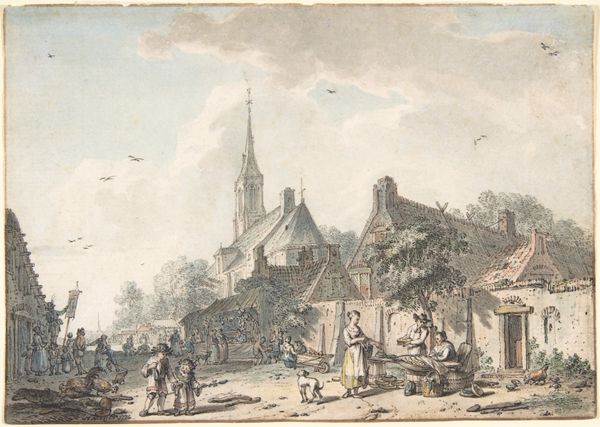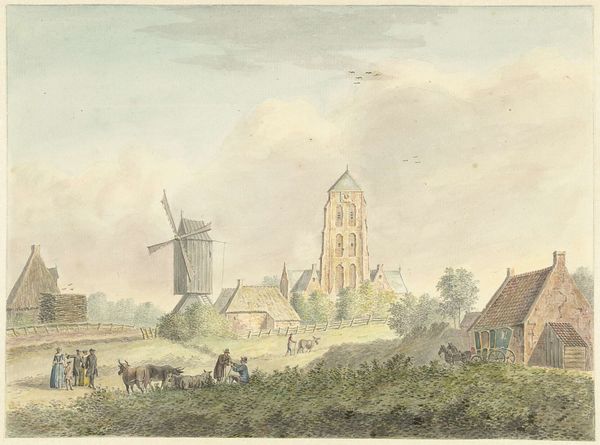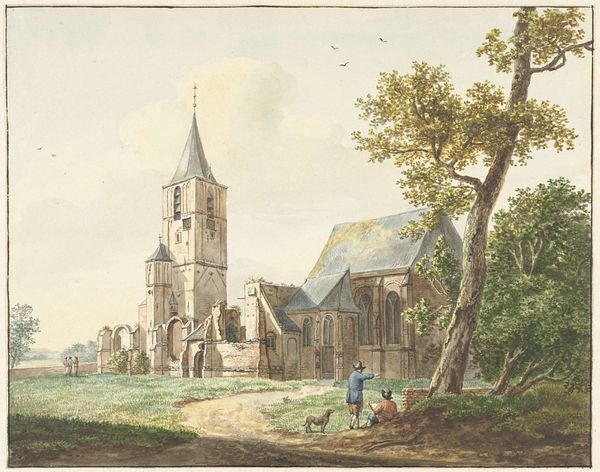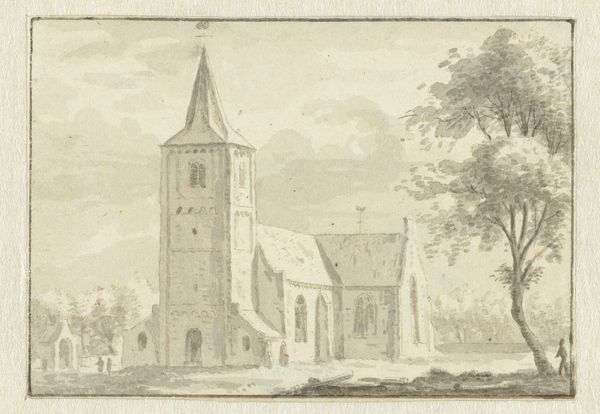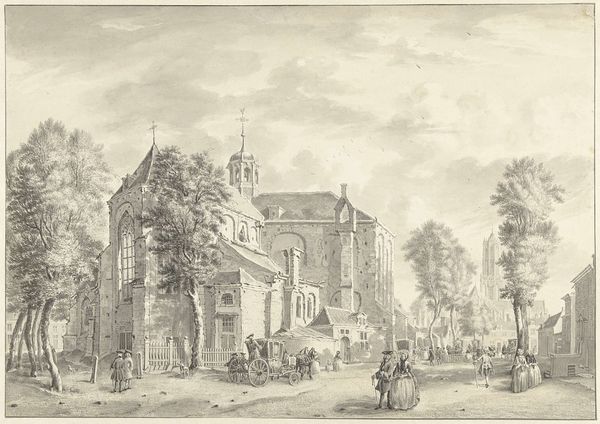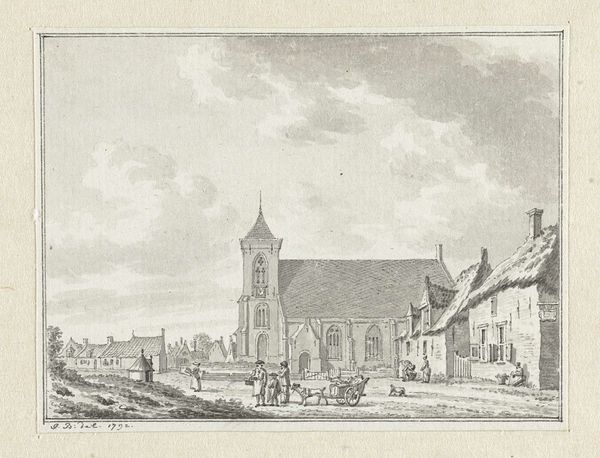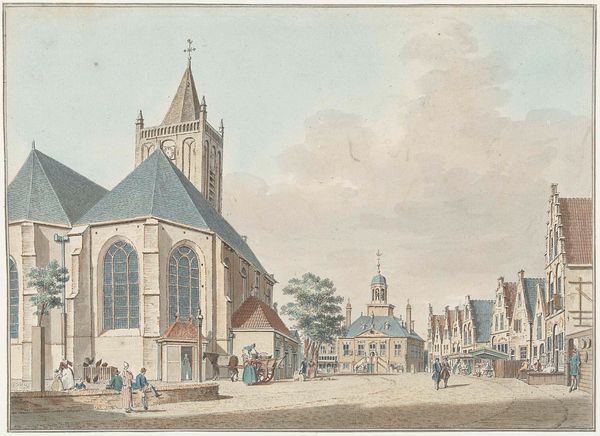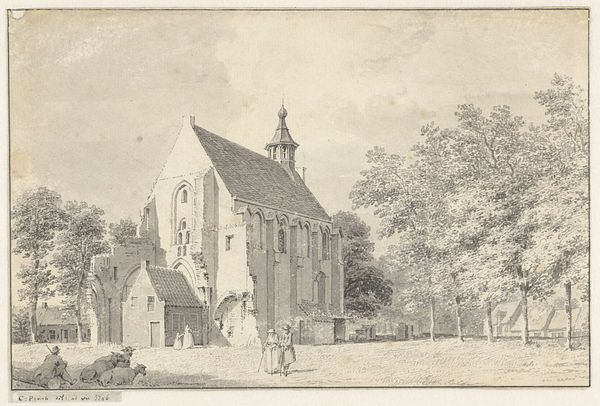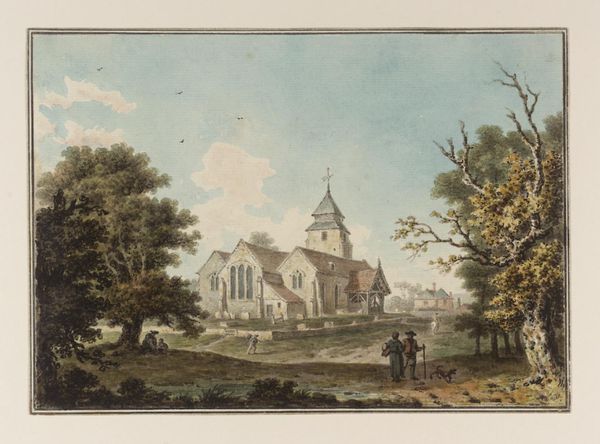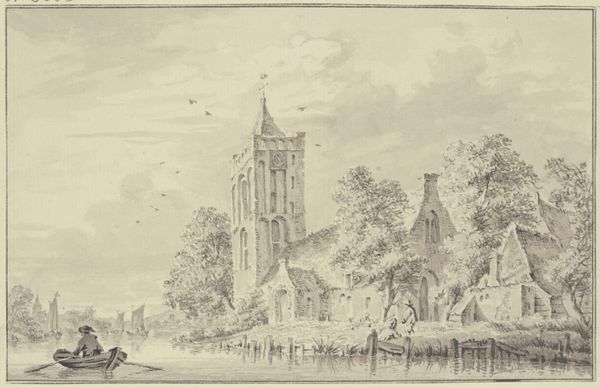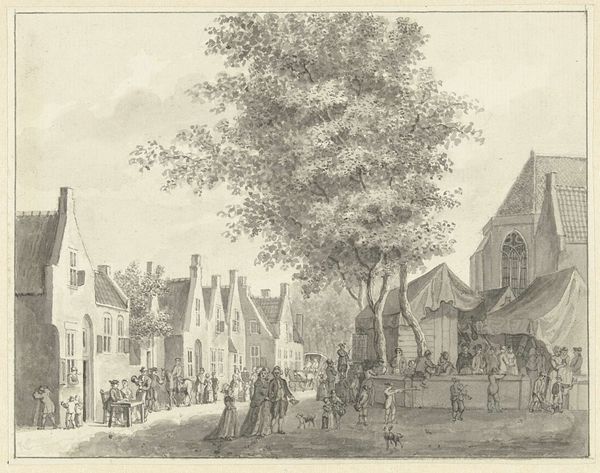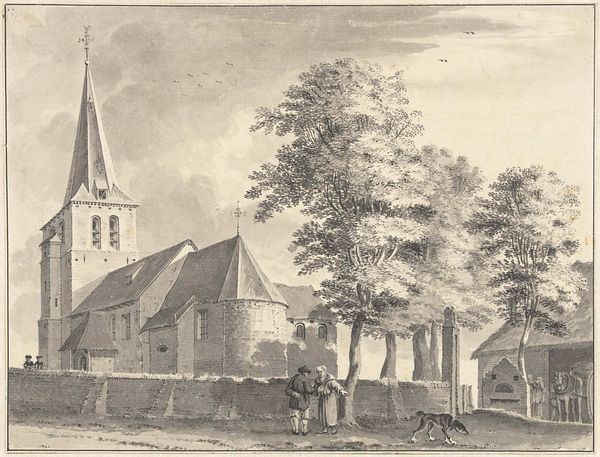
painting, watercolor
#
neoclacissism
#
painting
#
landscape
#
watercolor
#
romanticism
#
cityscape
#
watercolor
Dimensions: height 159 mm, width 227 mm
Copyright: Rijks Museum: Open Domain
Editor: Here we have Hermanus Petrus Schouten's "Kerk en ruïne van de abdij te Rijnsburg," dating from 1757 to 1822. It's a watercolor painting and depicts, as the title suggests, a church alongside the ruins of an abbey. There's a strong sense of serenity in the scene despite the presence of the decaying structure. What do you see in this piece? Curator: The juxtaposition of the intact church with the ruined abbey is very telling of the changing social and political landscape in the Netherlands during this period. We see Neoclassicism subtly giving way to Romanticism. This imagery highlights a specific public role for art – to reflect on the past while engaging with contemporary society. Who is in power? What stories do they want to tell? What stories get left behind, like this ruin? Editor: That's interesting, how the ruins can reflect a sort of societal forgetting. I hadn't considered the power dynamics at play. The figures in the foreground almost seem indifferent to the ruin. Curator: Precisely. This detachment reveals how collective memory can be selectively curated. The idyllic depiction almost sanitizes the historical complexities. Note the people, almost like set dressing – How do they contribute to a larger understanding of power? Editor: They really do seem more like landscape elements now that you mention it. Is that a common thread in art depicting ruins? Curator: Often, yes. Ruins are frequently romanticized, obscuring potentially uncomfortable truths about social upheaval or religious transitions. They become picturesque symbols devoid of their original sociopolitical context, almost serving as lessons. It almost makes you wonder, doesn't it? Editor: It does! I am struck by how much more there is to see when thinking about the social and political backdrop of an artwork. Curator: Indeed, it reframes our understanding of its meaning and place within the grand narrative of history.
Comments
No comments
Be the first to comment and join the conversation on the ultimate creative platform.
